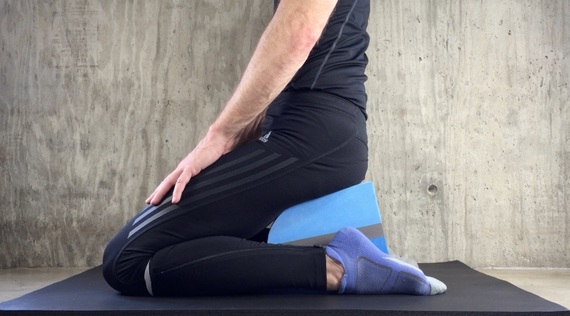Celebrities. CEOs. World leaders. Auto mechanics. Everybody's doing it. The word is out. Mindfulness achieved through meditation is good for you. There is a wealth of studies showing the benefits of being as serious about caring for your mind as you are about your body. Stress, anxiety, and depression decrease, while your focus, productivity and happiness increase. Granted, it may never reach the point where meditation studios pop up next to Starbucks, but the wave is building.
That wave comes with a flood of data about what mindfulness and meditation are and how you are supposed to go about it. In that overflow, it's easy to get lost and even discouraged.
When I looked into meditation, I was confused by the most basic things like how I should sit and what I should do while I was sitting there.
That's why it's important, certainly at the beginning stages, to understand just how simple and straightforward the practice of meditation is. There is no mystery or magic. There is no failing. It's quite straightforward.
Here are the basics:
1) What is being mindful?
Being mindful simply means being present, being aware of your surroundings and not distracted by thoughts, especially about the past or the future. You know, listening when the person tells you her name.
2) How do I become mindful?
You become mindful through practice. That practice is meditation.
3) How do I meditate?
Google shows 120,000,000 results for meditation and Amazon offers pages and pages of books. It gets overwhelming. But start with the basics. Find a quiet place and sit.
4) How do I sit?
Yes, you can lie down, but it is not recommended as you may fall asleep.
It is better to find a way to sit:
- Chairs: A chair with a straight back is fine. Your back should be straight, but relaxed.
- Kneeling: Place a folded blanket or large flat cushion on the floor. Kneel as though you were going to sit on your heels. You can place pillows in between your buttocks and calves to achieve a comfortable height. Some prefer to buy a wooden meditation bench to support and raise the buttocks. This position felt best for me, but I wanted it to be more comfortable so I created the Now Kit, an ergonomic meditation bench, rubberized mat and a complete set of meditation instructions. It is currently available through Kickstarter.
- Cross-legged: There are a number of ways to sit cross-legged. Get something soft like a folded blanket to put on the floor. You can also buy meditation floor pillows called Zabuton (a base) and a Zafu (to place on top of the Zabuton). You may need additional pillows or folded blankets to support your buttocks and knees so they don't feel pain. Mostly, I find it helps to use a pillow to slightly elevate the buttocks while sitting cross-legged - it relieves stress to the lower back. Burmese style: Sit cross-legged with your first heel close to your crotch and the other heel just in front of it. Quarter, Half and Full-Lotus: These positions require a lot of flexibility and placing your heels on your calves and/or thighs. This is not recommended for beginners. You will likely pull something. Google those positions when you're more flexible.
5) What do I do with my hands and head?
Place one hand on each thigh or gently cup your left hand in your right hand with the thumbs touching. Your head should just be an extension of your erect but relaxed spine.
6) What do I do with my eyes?
Meditate with your eyes closed or open them slightly staring blankly about three feet in front of your knees.
7) What do I do next?
The easiest starting point for beginners is to focus on your breath. This is really just a way of getting you to be present. There are few things more present than each breath. Some find it helpful to count each breath as it comes in through your nostrils and as it exits (you can breathe out through your mouth or nose). You can count each inhale as 1 and each exhale as 2, or your can count each inhale and exhale as 1. Get to ten and start again. Your mind will wander. Do not judge yourself. Just gently return your mind to your breathing. Be aware of body sensations and sounds, but always come back to your breath.
8) How long should I meditate?
Start small, a few minutes and gradually build. Use a timer or download any of the myriad meditation apps that are out there like Headspace or InsightTimer. The important thing is to build the habit. Sit every day even if it is for a very short period of time.
9) What should I expect?
Don't. It's a practice. The practice is about failing, about becoming distracted and returning to your breath over and over again. You are habituating yourself to being more present. Don't make the mistake of putting pressure on yourself, or demanding that this is another thing you must succeed at. Those are antithetical to mindfulness. It's about perseverance. About trying again when you fail. It's about life, and about overlaying the mindful mindset to the rest of your life.
Good luck.
BA Brown is a writer and meditator who is running a Kickstarter campaign for the Now meditation kit. He starts and advises startups. He has raised hundreds of millions in venture capital and been a co-founder in a number of technology startups. Follow the MindfulYak at@mindfulyak or on Facebook.
